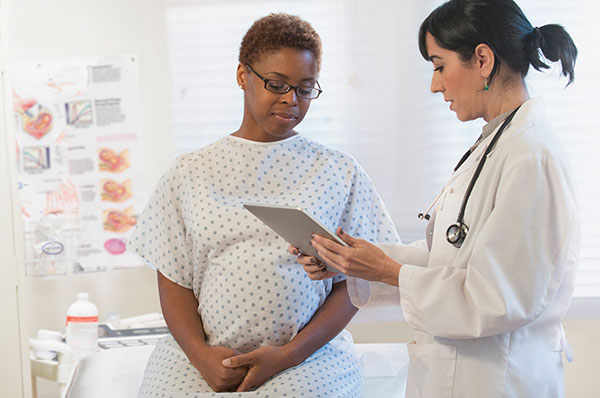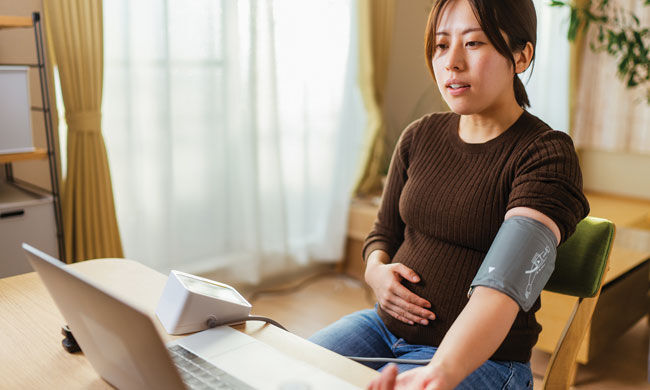(Family Features) A common misconception is high blood pressure (HBP), or hypertension, rarely affects women. However, nearly half of all adults with HBP are women.
While HBP isn’t directly related to gender, a woman’s life stages like pregnancy, pregnancy prevention (birth control) and menopause can increase the risk of developing HBP.
 HBP is an important sign that preeclampsia, or severe high blood pressure during pregnancy, may be developing and testing may be needed to check both the mother and baby. Not all women have noticeable symptoms beyond high blood pressure, but when they do occur, they may include headaches, vision changes, abdominal pain or rapid swelling (edema).
HBP is an important sign that preeclampsia, or severe high blood pressure during pregnancy, may be developing and testing may be needed to check both the mother and baby. Not all women have noticeable symptoms beyond high blood pressure, but when they do occur, they may include headaches, vision changes, abdominal pain or rapid swelling (edema).
Black women of childbearing age are more than twice as likely to have uncontrolled blood pressure than their white counterparts, according to research featured in a special Go Red for Women issue of the “Journal of the American Heart Association.” Additionally, food insecurity, or lack of access to adequate healthy food, which is one of the social factors that may affect HBP risk, is higher among Hispanic and Black women compared to white women.
While delivery of the child is the only cure for preeclampsia, which affects 1 in 25 pregnancies in the United States, management of condition is based on several factors, including the overall health of the mother and the progress of the disease. Symptoms usually subside within six weeks of delivery.
To help ensure a heart-healthy pregnancy, consider these tips. Education about healthy heart habits from the American Heart Association is nationally supported by Elevance Health Foundation.
Visit a health care provider regularly. A health care professional will monitor you and your baby at regular prenatal visits – monthly until 28 weeks then the frequency will increase to bi-weekly or weekly as the due date approaches. There is no proven way to prevent preeclampsia or test to predict the condition. Follow your health care team’s recommendations and check blood pressure and urine levels of protein regularly, if advised.
Track blood pressure at home. To take readings, the American Heart Association recommends using a validated automatic, cuff-style bicep monitor. Avoid caffeine or exercise within 30 minutes before measuring and empty your bladder at least 5 minutes beforehand. Sit with your back straight and supported with your arm supported on a flat surface and the upper arm at heart level. Place the cuff directly above the bend in the elbow and don’t take the measurement over your clothes. Measure at the same time daily, such as morning and evening, and record the results to share with your doctor.
Take medication as prescribed. Some medications, including some heart medicines, may be risky for you or your fetus during pregnancy. Talk to your doctor about what’s safe, what to do if you miss a dose and other drugs or supplements that may help improve or maintain your health. Never stop medications without approval.
Manage blood pressure through lifestyle modification. Limiting salt intake and getting regular physical activity can help keep blood pressure in a healthy range.
Reduce stress and manage anxiety. Some ways to calm down include meditating, spending time in nature and enjoying other hobbies.
Monitor weight gain. Doctors will advise you how much weight is safe to gain based on your body mass index (BMI) before pregnancy. Normal weight women with a BMI of 18.5-24.9 who are pregnant with one baby are typically expected to gain 25-35 pounds.
Avoid unhealthy habits. While pregnant, do not smoke, drink alcohol or use illegal drugs.
It’s important to know that women with preeclampsia are more likely to develop HBP and diabetes later in life. Research also shows having the condition increases the odds of heart failure, especially if preeclampsia happens in more than one pregnancy.
Learn more about how HBP can impact pregnancy, and how to take control of your blood pressure, at heart.org/health-topics/high-blood-pressure.
Photos courtesy of Getty Images









